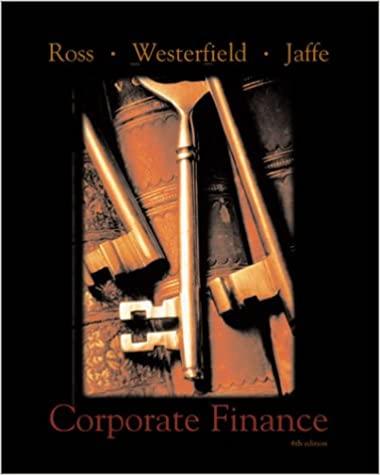Strom, Inc., has 250,000 outstanding shares of stock that sell for ($20) per share. Strom, Inc., currently
Question:
Strom, Inc., has 250,000 outstanding shares of stock that sell for \($20\) per share. Strom, Inc., currently has no debt. The appropriate discount rate for the firm is 15 percent.
Strom’s earnings last year were \($750,000.\) The management expects that if no changes affect the assets of the firm, the earnings will remain \($750,000\) in perpetuity. Strom pays no taxes.
Strom plans to buy out a competitor’s business at a cost of \($300,000.\) Once added to Strom’s current business, the competitor’s facilities will generate earnings of \($120,000\) in perpetuity. The competitor has the same risk as Strom, Inc.
a. Construct the market-value balance sheet for Strom before the announcement of the buyout is made.
b. Suppose Strom uses equity to fund the buyout.
i. According to the efficient-market hypothesis, what will happen to Strom’s price?
ii. Construct the market-value balance sheet as it will look after the announcement.
iii. How many shares did Strom sell?
iv. Once Strom sells the new shares of stock, how will its accounts look?
v. After the purchase is finalized, how will the market-value balance sheet look?
vi. What is the return to Strom’s equityholders?
c. Suppose Strom uses 10-percent debt to fund the buyout.
i. Construct the market-value balance sheet as it will look after the announcement.
ii. Once Strom sells the bonds, how will its accounts look?
iii. What is the cost of equity?
iv. Explain any difference in the cost of equity between the two plans.
v. Use MM Proposition II to verify the answer in (iii).
Step by Step Answer:






